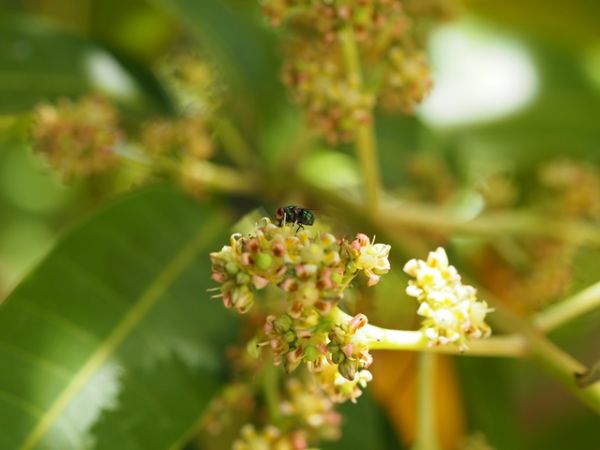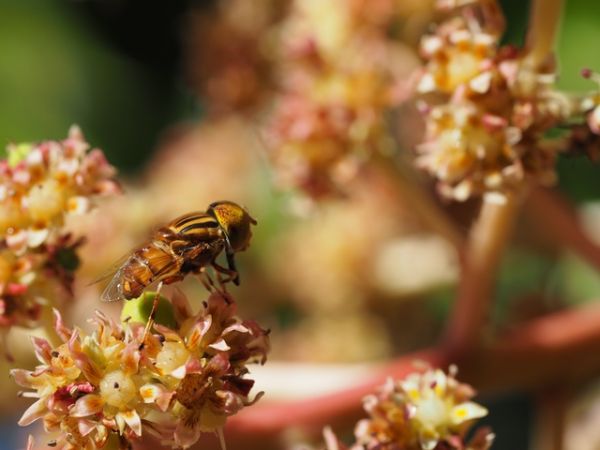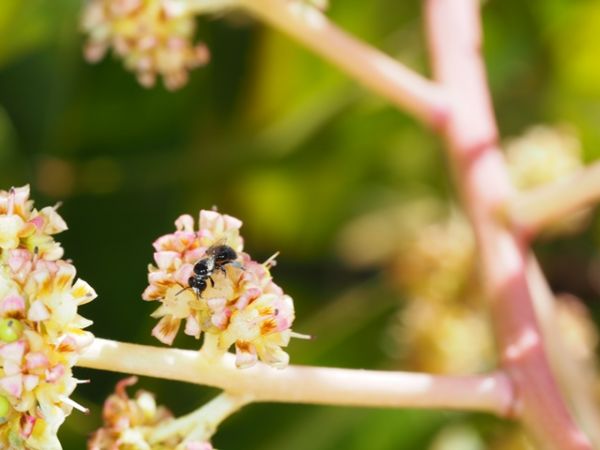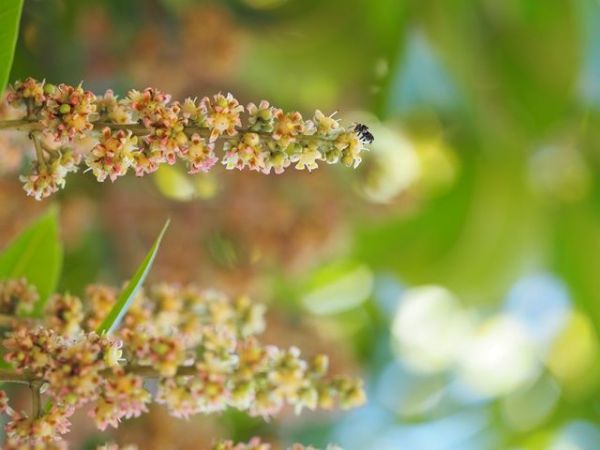Mango pollination: how important are alternative flower visitors?
Pollination services in the majority of fruit crops rely heavily on a single major pollinator (European honey bee, Apis mellifera). However, there has been increasing pressure on honey bee populations recently due to multiple stresses, including the devastating Varroa mite. Australia is currently free from Varroa mite infestation, but an invasion is highly likely in the near future and could have severe consequences for Australian fruit growers. Therefore, it is time to investigate the pollination potential of alternative pollinators, such as native stingless bees, in tropical crops like mango, avocado and lychee. This will help prepare for any Varroa mite invasion, as over-reliance of crops on a single pollinator species is risky.

A Blowfly

A Hoverfly

A Solitary bee

A Stingless bee
Common visitors to mango flowers in the Northern Territory.
Pollination is an important issue and previous work suggests that various insects—including flies, bees and beetles—can be mango pollinators, but key pollinators may vary across locations. Native sugarbag bees or stingless bees may be excellent candidates for mango pollination owing to their small size and require further studies in key regions like the Northern Territory (NT). Our research focuses on investigating the pollination efficiency of stingless bees and other wild pollinators in mangoes.
Over June and July 2019, we performed floral visitor surveys on plantations of Kensington Pride mangoes at six field sites near Darwin and two sites near Katherine in the NT.
Preliminary results show that NT mango farms are frequently visited by wild stingless bees, hoverflies, blowflies and several species of native solitary bees (shown in images above). In both Darwin and Katherine regions, stingless bees were the dominant flower-visiting group, comprising almost half of the total insect visitation. They readily visited mango flowers in large numbers and collected nectar as well as pollen. Surprisingly, only a few honey bees were observed during our survey days across the eight farms, which suggests that mango flowers may not be a first choice food for honey bees.
Insect visitations and the number of different insect species both significantly declined with distance from the crop border. We also noticed a strong edge effect in the spatial distribution of stingless bees, with around half of all stingless bee visitations recorded on the edge trees alone and no stingless bees recorded beyond 300m into the crop. Similarly, solitary bees were more or less completely confined to edge trees. In contrast, hoverflies and blowflies were spread more evenly across the orchards.
Stingless and solitary bees actively forage for both nectar and pollen, while blowflies and hoverflies visit for nectar only. Stingless bees spent the longest time on each flower, but hoverflies visited more flowers per minute. Owing to their small size, stingless bees fit completely inside the middle of mango flowers and they repeatedly walk around and across the flowers with their abdomen and legs making contact with reproductive parts of the flowers. We observed a positive relationship between fruit set and visitation by stingless bees and blowflies which shows that insect visitations significantly increase fruit set in mango orchards.
Our results demonstrate the overall importance of insect flower visitors but proving the relative importance of different individual insect species requires further studies. In the upcoming mango flowering season, we will assess the pollination efficiency of stingless bees in comparison with other major flower-visiting insects to help inform effective pollination management in mango orchards.
Article prepared by Mr Gaurav Singh and Dr James Makinson from Hawkesbury Institute for the Environment, Western Sydney University. For further information please contact Gaurav on P: 02 4570 1294 or E: g.singh4@westernsydney.edu.au.
Acknowledgements: “Stingless bees as effective managed pollinators for Australian horticulture” is funded by the Hort Frontiers Pollination Fund, part of the Hort Frontiers strategic partnership initiative developed by Hort Innovation, with co-investment from Syngenta Asia-Pacific, Olam International, Griffith University and contributions from the Australian Government.
We would like to express our sincere thanks to the staff and management of Cheeky Farms, Jenko’s Mangoes, Skliros Produce, Tou’s Garden Pty Ltd, Manbullo Ltd, and PTA Docking Pty Ltd, for allowing us to work and stay on their properties.
